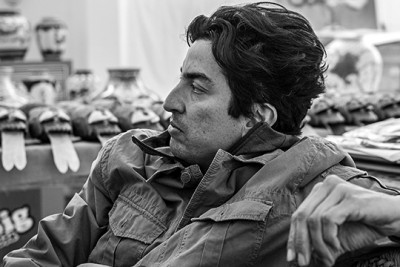Eduardo Sarabia
Biography

Eduardo Sarabia’s work has been inspired by the independent economies and folk history of northern Mexico. He frequently works with the materials favored by local craftspeople, using ceramic tiles, hand-woven textiles, and glass to create sculptures and installations that address the complex exchanges—social, cultural, and material—that occur when this region and its history encounters outsiders. Without limiting himself to a critique of the “exoticization” of Mexican culture, Sarabia examines the gap separating definitions of taste (and, more bluntly, of legality). Mixing romantic visual narratives in regards to illegal matter, fine arts and commerce, creating an environment that slips between the oneiric and the openly materialistic, Sarabia’s work takes on an important exploration of understanding the physical and human consequences of economic forces.
His work has been exhibited in numerous museums such as Tamayo Museum in Mexico City in 2016; 2014 at Centro Cultural Cabañas in Guadalajara and Museo de Arte Contemporaneo Oaxaca, Mexico, in the same year at ASU Art Museum, Arizona; in 2013 he had a solo show for his paintings at Museum of Contemporary Art, Denver; and venues such as Los Angeles County Museum of Art, 2008 at the Whitney Biennial, and New Museum in New York. He has received 2 grants for the Durfee Grant Foundation (2004 and 2008) and has been invited to be an artist in residence at Tokyo Wonder Site in Tokyo, Japan were he completed a large public ceramic mural.